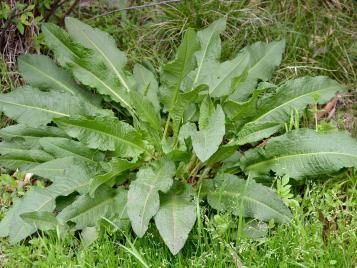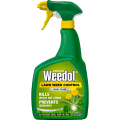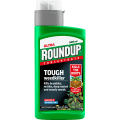

Getting Rid Of Dock Leaves
What are docks?
Docks are perennial weeds, that are very common in gardens, fields and hedgerows. The two most common species in the UK are broadleaf dock (Rumex obtusifolia) and curled dock (Rumex crispus).
Dock plants can be difficult to get rid of because they can re-grow from the tops of their long tap roots. Dock seeds can lie dormant in the ground for up to 50 years, so docks often appear on ground that has been recently dug over, allowing light to reach dormant seeds.
Rubbing nettle stings with a dock leaf is a well-known folk remedy, believed to reduce the pain of the sting.
How to identify docks?
Dock plants form rosettes of large oval green leaves with distinct midribs. Broadleaf dock leaves are flat, while curled dock has curly-edged leaves. Because of its traditional use on nettle stings, the dock leaf is generally well-recognised. Dock plants have very long tap roots, which can reach up to 90cm (3ft).
Both curled and broadleaf dock produce flowerspires in summer, densely packed with small greenish-white flowers that produce tens of thousands of seeds.

Dock symptoms and damage
Because docks produce such a large amount of seed, they can spread and quickly take over neglected or bare areas of a garden. They compete with other plants for water and nutrients, and can also act as host plants for pests such as bean aphids and potato eelworms.
Dock treatment and control
Docks are difficult to completely eradicate from a garden because they can re-grow from their tap roots, and also because of the amounts of seed they produce.
To control docks without the use of chemicals
- Dig up individual plants by hand, aiming to remove as much of the tap root as possible, as only the top 15cm (6in) of root is able to re-grow into a new plant.
Using weedkiller to control docks
- Kill dock weeds by spraying lawns with a selective weedkiller such as Weedol Lawn Weedkiller. The best time to apply lawn weedkiller is in late summer. Remove the flowering heads first to prevent them seeding.
- Spray docks in borders with a systemic weedkiller containing glyphosate, such as Roundup Ultra, or use Roundup Gel to target individual docks. This is best done in summer when the plants are in full leaf. Glyphosate is a non-selective weedkiller that will kill any plant it comes into contact with, so protect surrounding plants with plastic sheeting.
- Always follow the manufacturer’s instructions when using weedkiller.
How to prevent docks?
- Mulch beds thickly with compost or bark to exclude light from dock seeds and reduce germination.
- Remove docks before they set seed.













